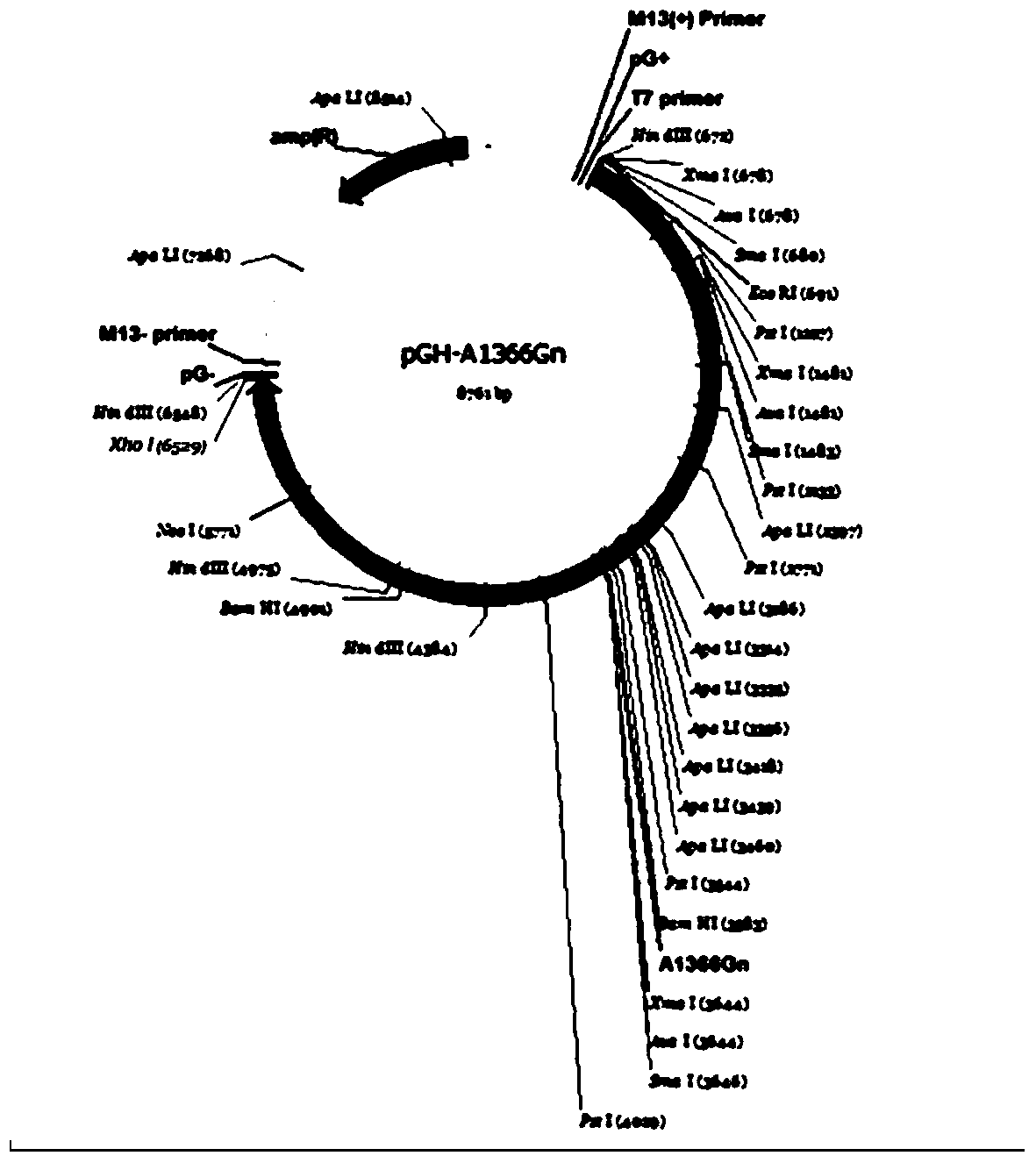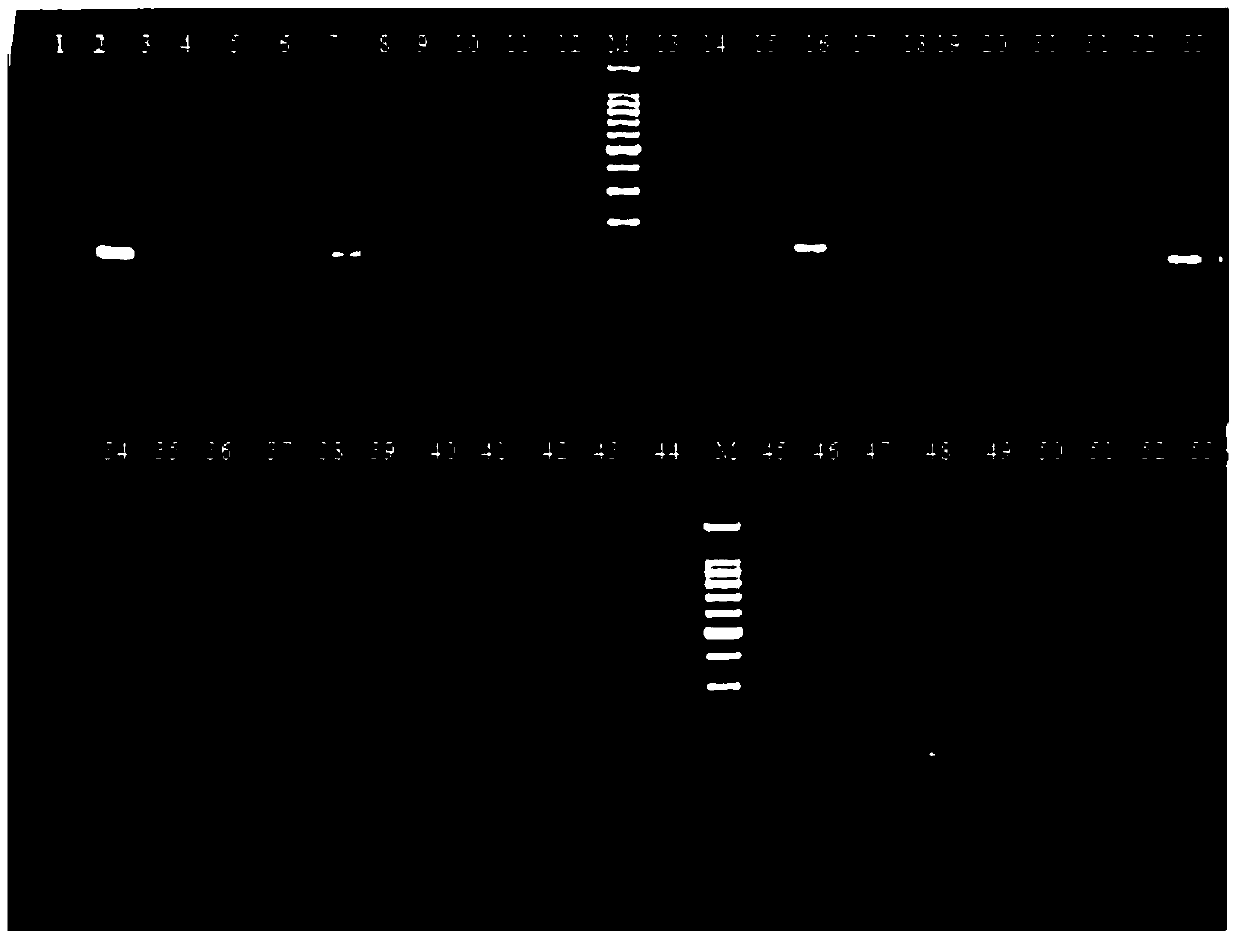Method of improving litter size of animals
A technology for litter size and animals, which is applied in the field of increasing the litter size of animals, and can solve the problem that the litter size of FSHR gene-transformed female mice has not been reported.
- Summary
- Abstract
- Description
- Claims
- Application Information
AI Technical Summary
Problems solved by technology
Method used
Image
Examples
Embodiment 1
[0051] Embodiment 1, construction and identification of FSHR gene transgenic mice
[0052] 1. Construction of recombinant expression vector
[0053] synthesis figure 1 The pGH-A1366Gn plasmid is shown, and the sequence of the plasmid is shown in SEQ ID No.1.
[0054] The 690th to 695th from the 5' end of SEQ ID No.1 is the EcoRI restriction recognition site, and the 696th to 4213rd is the promoter sequence that can be specifically expressed on ovarian granulosa cells. Anti-Muller The promoter sequence (AMH) of vasculin hormone, No. 4214 to No. 6302 is the CDS sequence (pFSHR) of porcine FSHR gene, No. 6303 to No. 6527 is BGHpA (this sequence is a termination sequence), No. 6528 The 6533th position is the recognition site of Xho Ⅰ enzyme digestion.
[0055] figure 1 Among them, the target sequence composed of EcoRI recognition site, AMH, porcine FSHR gene CDS sequence (pFSHR), BGHpA and XhoI restriction site is as follows: figure 2 shown.
[0056] 2. Digest the pGH-A1366...
Embodiment 2
[0168] Embodiment 2, trans FSHR gene mouse and negative control mouse litter size statistics
[0169] 1. According to Table 2, the F0 generation mice were mated.
[0170] Table 2 F0 generation mouse mating situation
[0171]
[0172] The results in Table 2 show that the litter size of FSHR transgenic mice No. 16 and No. 33 is higher than that of negative control mice.
[0173] Two, carry out the mating of F1 generation mouse according to table 3
[0174] Table 3 F1 generation mouse mating situation
[0175]
[0176]
[0177] In Table 3, the F1 generation positive mice are the positive FSHR gene transgenic mice produced by mating the F0 generation positive FSHR gene mice in Table 2 with Kunming white mouse breed male mice, and the F1 generation negative mice are the F0 generation mice in Table 2 The non-transgenic FSHR gene mice produced by mating the positive transgenic FSHR gene mice with the Kunming white mouse breed, the identification process of the transgenic ...
PUM
 Login to View More
Login to View More Abstract
Description
Claims
Application Information
 Login to View More
Login to View More - R&D
- Intellectual Property
- Life Sciences
- Materials
- Tech Scout
- Unparalleled Data Quality
- Higher Quality Content
- 60% Fewer Hallucinations
Browse by: Latest US Patents, China's latest patents, Technical Efficacy Thesaurus, Application Domain, Technology Topic, Popular Technical Reports.
© 2025 PatSnap. All rights reserved.Legal|Privacy policy|Modern Slavery Act Transparency Statement|Sitemap|About US| Contact US: help@patsnap.com



